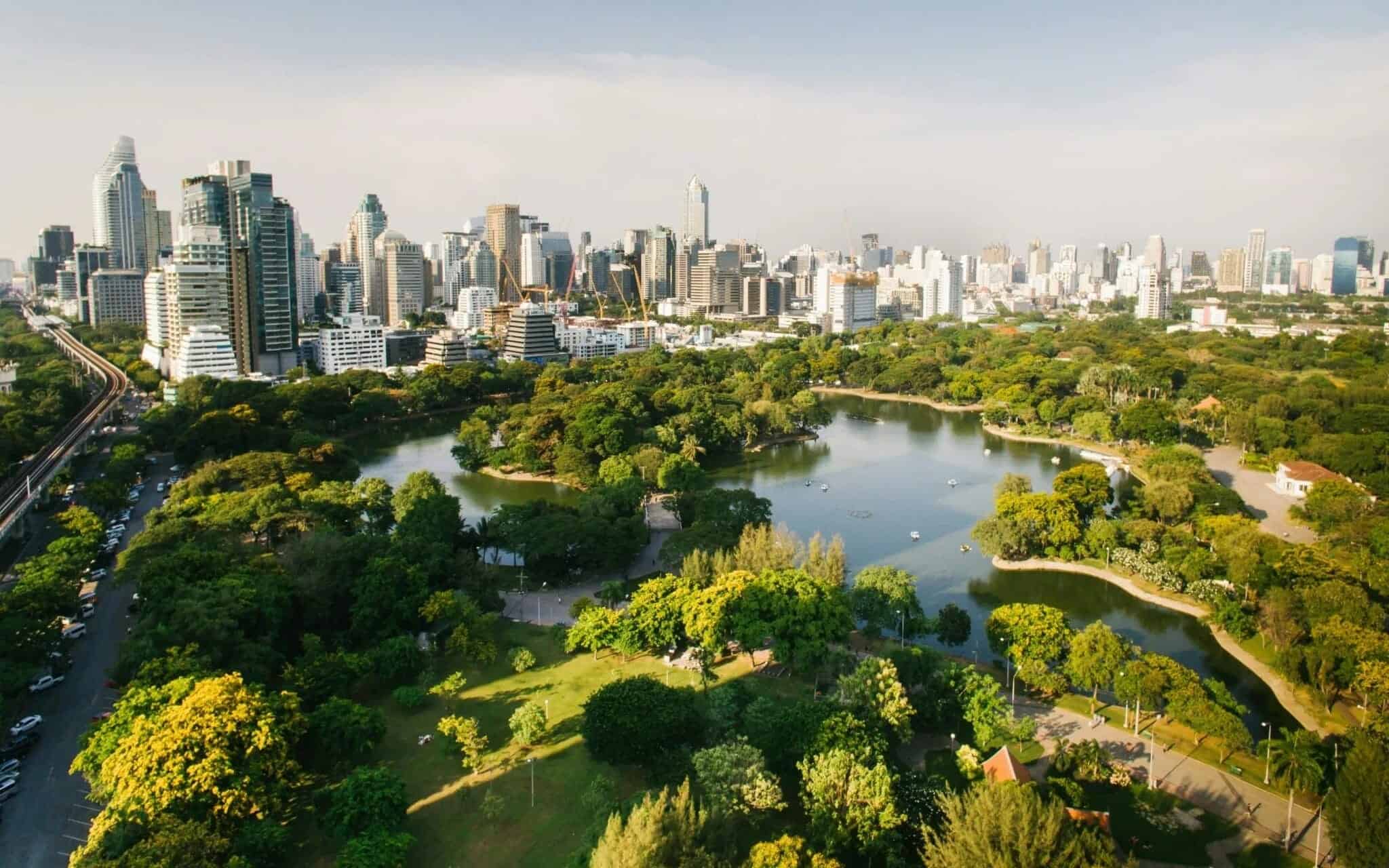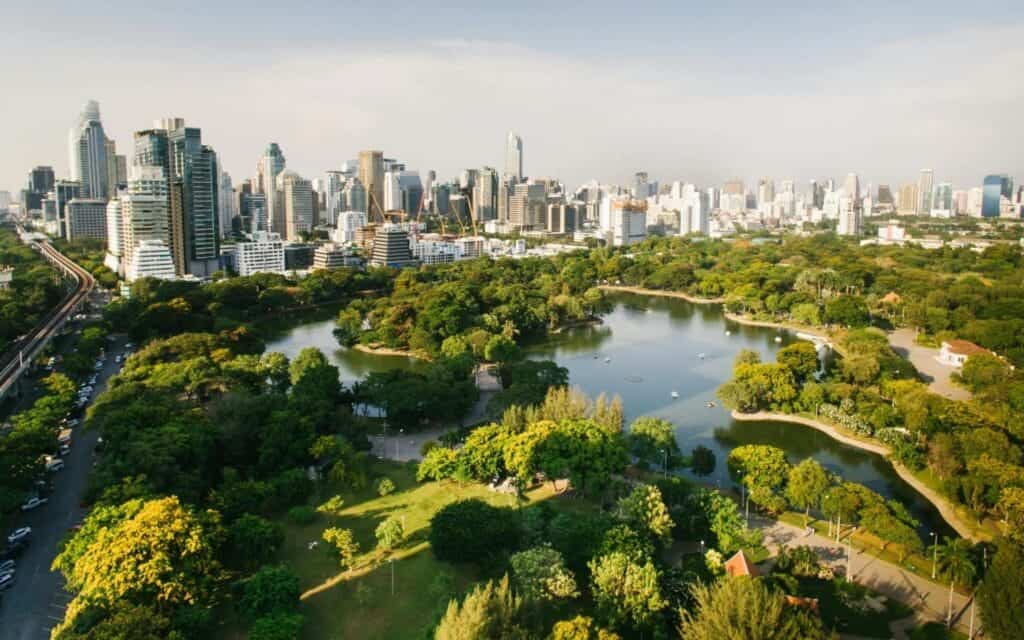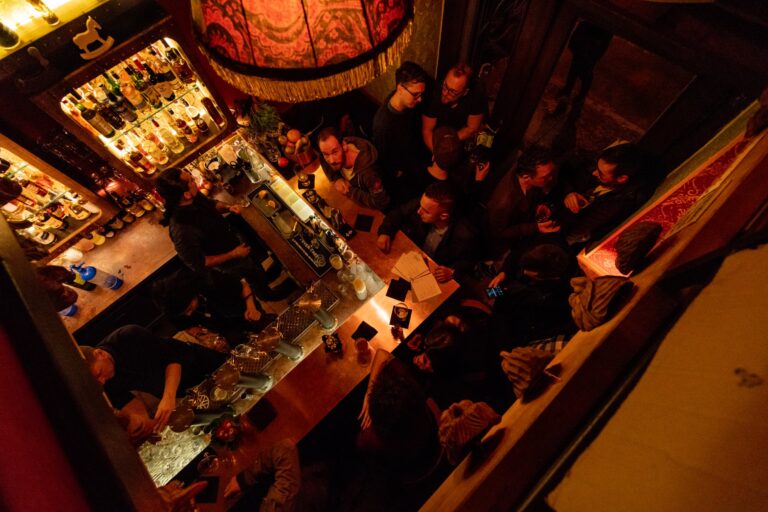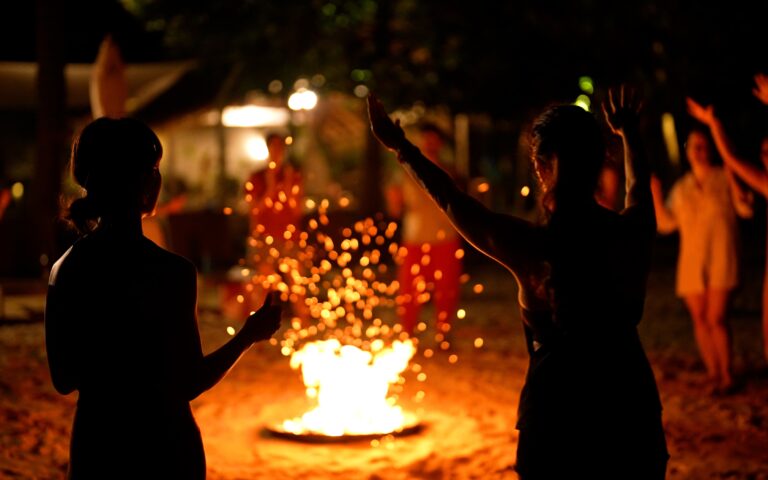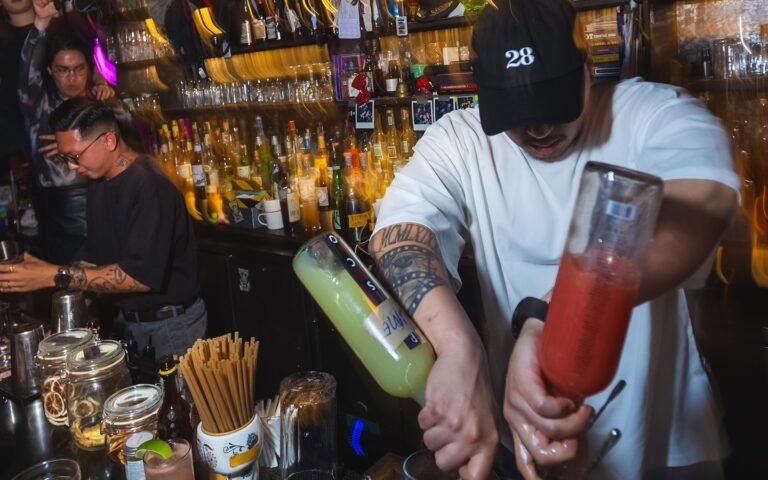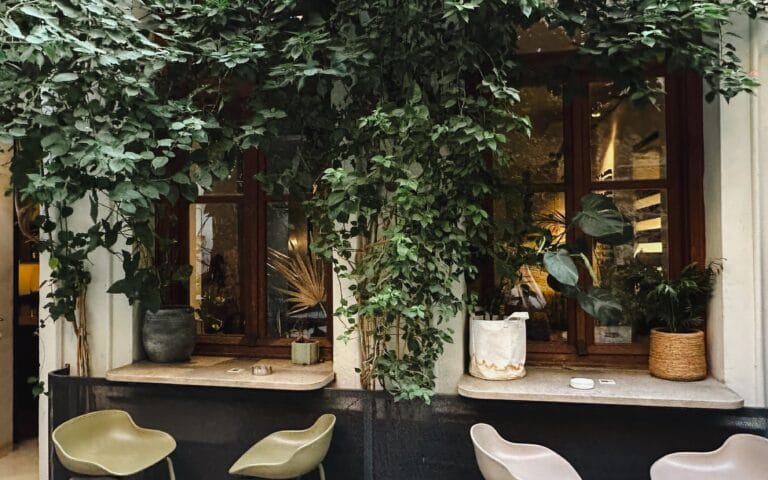Escape the hectic sois, traffic jams and gleaming malls of the Thai capital, for surprisingly peaceful green zones.
I’ve spent the last two years calling Bangkok home and navigating one of the world’s most densely packed cities. Towering condos press skyward, sois twist into brightly-lit labyrinths, and the city’s pulse rarely slows. For many visitors, Bangkok is all gleaming malls, bustling street markets, and the constant buzz of tuk-tuks and motorbikes weaving through traffic.
Yet the city’s greatest secret is its capacity for calm. Even amid the urban roar, pockets of serenity emerge: morning mist drifting off lotus ponds, the heady fragrance of frangipani in a hidden courtyard, dragonflies darting above a quiet canal.
These green havens offer relief from the chaos, a chance to breathe deep and remember that Bangkok’s soul isn’t just concrete and neon, but also soft rustles of leaves, cool splashes of water, and the gentle chorus of birds. Many arrive expecting only heat and hustle, but we suggested you leave astonished to discover that in this city, nature quietly thrives and unexpected oases reveal a softer, more balanced side.
Benjakitti Forest Park: Dawn’s quiet encore
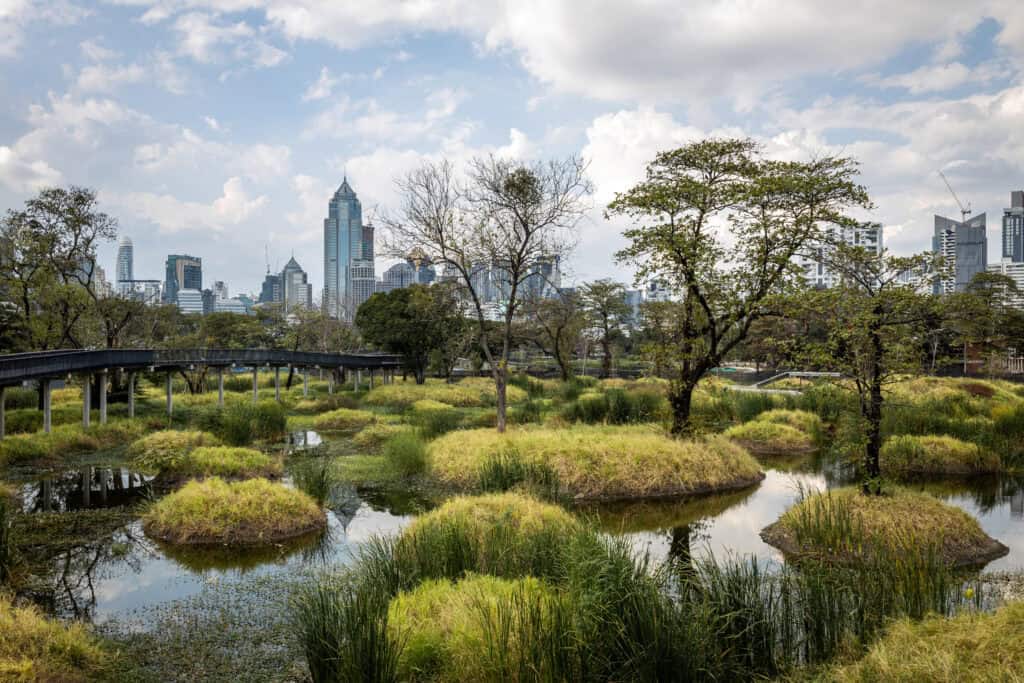
Lumpini may be “Bangkok’s Central Park,” but tucked between Asoke and Khlong Toei, the newly expanded (and my personal favorite) Benjakitti Forest Park now covers 48 hectares of reclaimed industrial land. Slip through the gates early morning, inhaling cool, spring-fresh air as mist lifts off reed-fringed ponds and mirrored towers flare to life.
By mid-morning, the rubberised sports track hums with runners; cyclists trace the 3 km loop; and local youths perfect paddleball on repurposed factory slabs. Weekends bring lakeside concerts at the outdoor amphitheater: jazz trios, string quartets, and Thai ensembles performing beneath swaying trees and across the shimmering water. As dusk settles, climb the 1.5 m high treetop trail, pausing to watch koi swirl beneath mangrove roots while dragonflies flit in the amber glow. Two lakeside cafés bookend the park, serving coconut-iced lattes and mango sticky rice; perfect fuel for a brisk yet indulgent circuit through Bangkok’s newest urban oasis.
How to get there: Exit Asoke BTS and walk five minutes south.
Best time: 7-9 am or 5-7 pm
Bang Krachao: The emerald escape
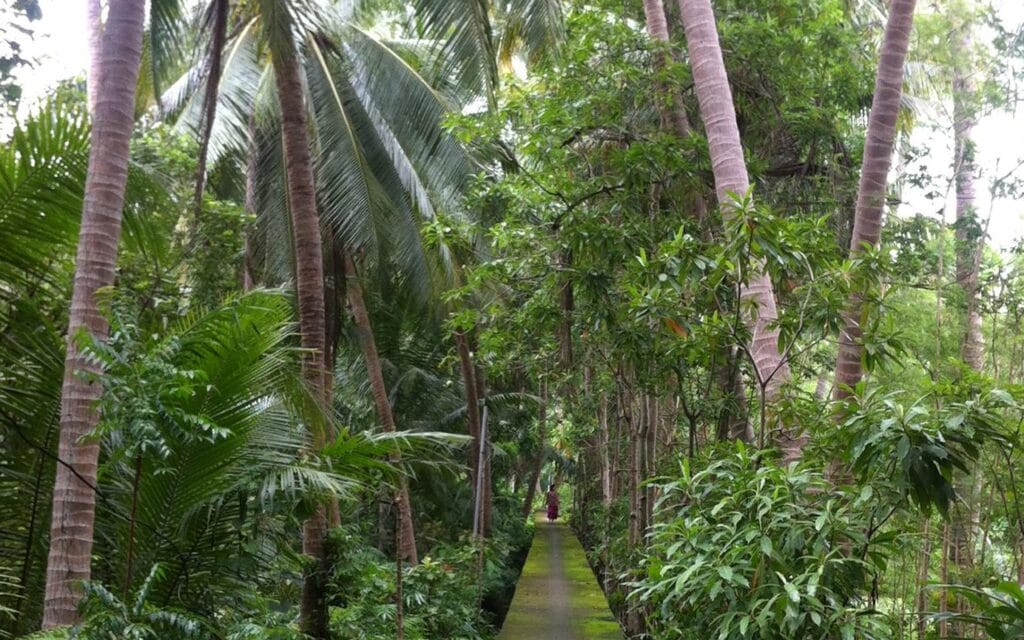
A half-hour from bustling Thonglor/Ekkamai area, Bangkok’s “Green Lung” Bang Krachao feels worlds away. This 11 hectare crescent of mangroves and orchards is cradled by the Chao Phraya River, and as the ferry’s engine hum fades, the city’s roar gives way to the earthy scent of damp soil and fresh grass.
Rent a vintage bicycle cruiser, buy some cold coconut water, and pedal along shaded lanes weaving through lush orchards. Paved loops invite a gentle 5 km ride; dirt paths plunge into secluded thickets where rustic fish traps bob in narrow canals. Families picnic beneath banyan trees, and at the park’s heart, a hidden café roasts beans over a wood fire, pouring coffee into handcrafted clay cups. Here, time truly slows, each sip a reminder that nature’s rhythm still pulses just beyond Bangkok’s edge.
How to get there: From Khlong Toei pier, hop on a long-tail ferry.
Best time: Mid-morning or late afternoon
Chong Nonsi Canal Park: New urban pocket park
In Chong Nonsi, the latest phase of the newly opened Green Canal Park project was recently completed, transforming a drab concrete waterway into a sculpted garden promenade, complete with native plantings, water features, canal, and teak benches. Some say the concept is reminiscent of New York’s Highline Park, with the blend of a green zone and engineered intimate spaces amid the city’s skyscrapers and concrete jungle. Add in clever landscaping, some terracing and you get a lush tropical pocket park along this busy linear city strip.
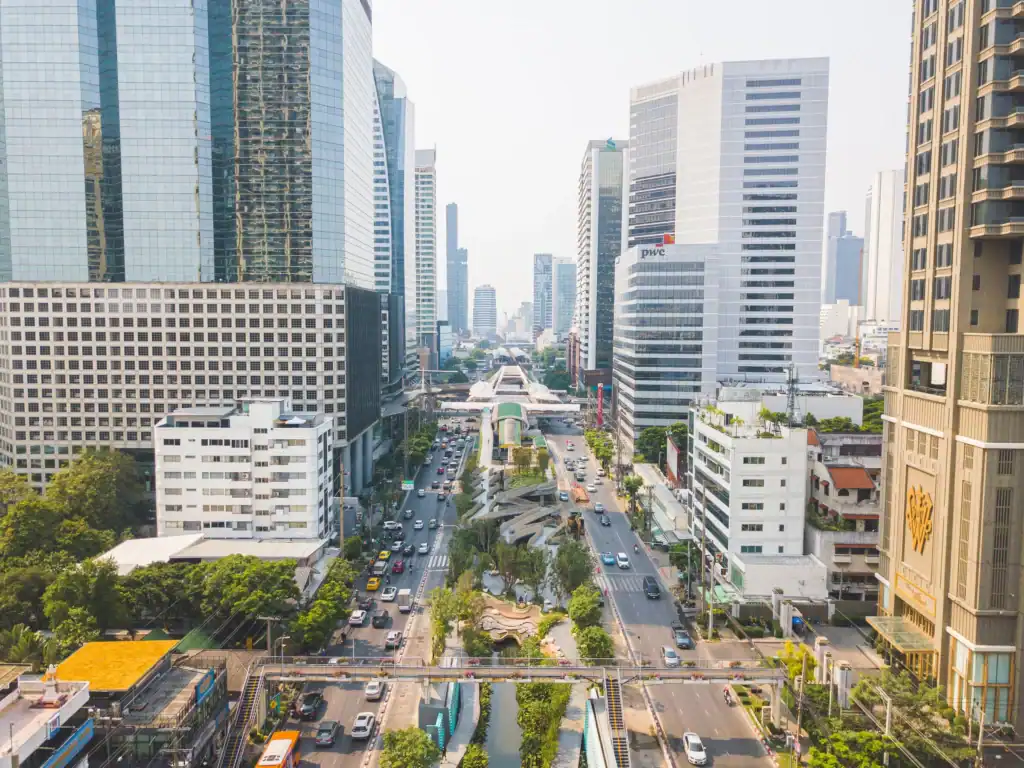
How to get there: Get off at Chong Nonsi BTS
Best time: Any time where you need a short, accessible respite from the urban grind.
Green Bangkok 2030
This initiative aims to boost tree canopy to 30 percent and raise per-capita green space to 10 m² by decade’s end, delivering 500 “15-Minute Pocket Parks” within an 800 m stroll of most homes. From large-scale promenades to tucked-away courtyards, new and emerging green spots are reshaping the city’s urban fabric. Whether you choose the broad sweep of a canal-side promenade or the secret calm of a soi courtyard, pocket-sized retreats show that Bangkok’s neighbourhoods are reclaiming serenity, one leafy corner at a time.
Wander around, and you may find more temple-courtyard gardens, where dozens of wats (temples) now open their inner sanctums as community green spaces. Explore vegetable plots, weekend farmers’ markets, or join a hands-on composting workshop beneath frangipani blossoms, while witnessing firsthand how sacred grounds are nurturing spirit and soil.
Even slipping down a quiet alley off Sukhumvit or Ari areas, and you may stumble upon a micro-garden bursting with ferns, jasmine vines, and native shrubs. Teak benches invite you to linger as bulbuls, mynas, and tailorbirds flit through the canopy, their birdsong a soothing counterpoint to the city’s hum.
“Green Bangkok 2030” has also meant that big new city developments will be following this mandate. For example, the upcoming giant Dusit Central Park Mall complex will debut a soaring rooftop park spanning over 2,000 m², which will be an elevated haven of lawn terraces, shade trees, and panoramic city views. This will no doubt become a new green landmark in the Thai capital.
Bangkok’s urban energy is no doubt intoxicating: vibrant markets, gilded temples, and buzzing streets beckon at every turn. Yet its true magic lies in contrast. Stepping into Benjakitti’s dawn-hazed wetlands, cycling beneath Bang Krachao’s emerald canopy, or stumbling upon a hidden pocket park reminds you that even the busiest metropolis can nurture pockets of peace. Pack your lightest activewear, charge your camera, and prepare to discover Bangkok’s green side, far beyond the ordinary.
